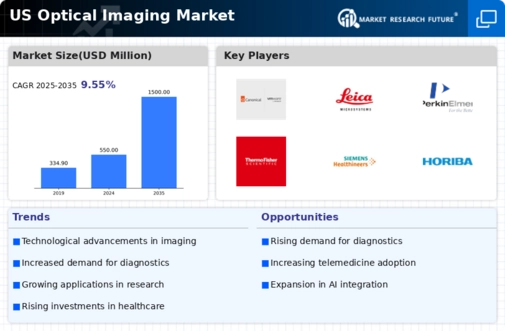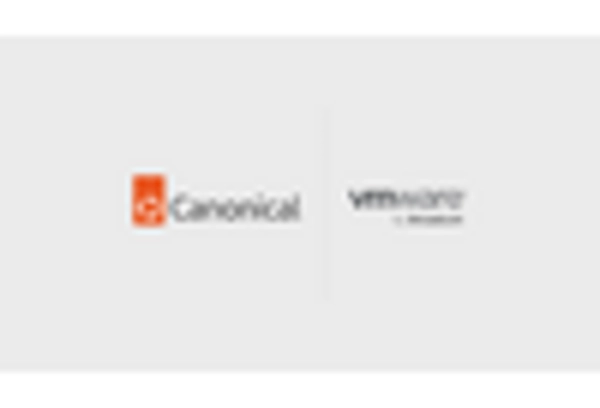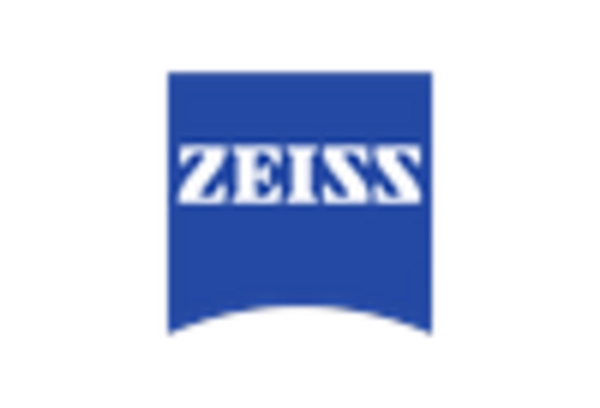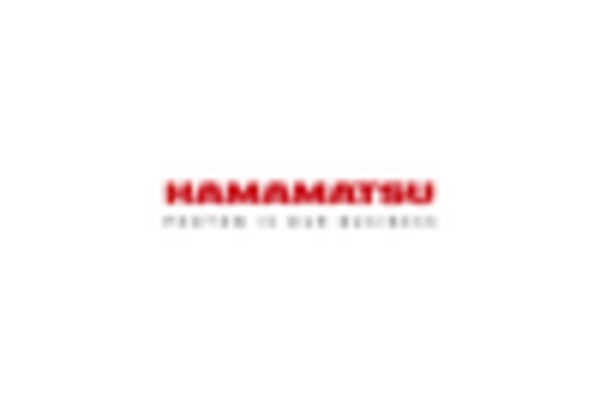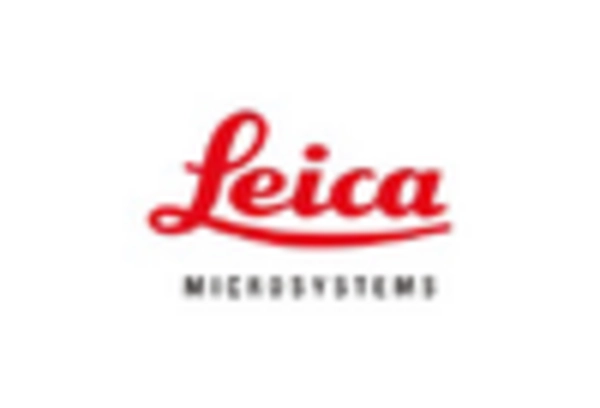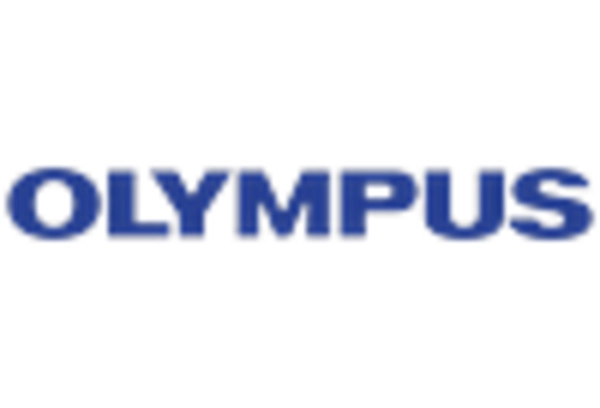Expansion of Telemedicine Services
The expansion of telemedicine services is significantly influencing the optical imaging market, as remote consultations increasingly require advanced imaging capabilities. With the rise of telehealth, healthcare providers are integrating optical imaging technologies to facilitate remote diagnostics and monitoring. This trend is particularly relevant in the US, where telemedicine usage has surged, with estimates indicating a 38% increase in telehealth visits over the past year. As telemedicine continues to evolve, the demand for optical imaging solutions that can be utilized in virtual settings is likely to grow, further propelling the market.
Growing Prevalence of Chronic Diseases
The optical imaging market is being propelled by the increasing prevalence of chronic diseases, which necessitate advanced diagnostic tools for effective management. Conditions such as cancer, cardiovascular diseases, and diabetes are on the rise in the US, leading to a heightened demand for precise imaging techniques. According to recent statistics, chronic diseases account for approximately 70% of all deaths in the US, underscoring the urgent need for effective diagnostic solutions. This growing health crisis is likely to drive investments in optical imaging technologies, as healthcare providers seek to improve diagnostic accuracy and patient outcomes.
Rising Demand for Non-Invasive Procedures
The optical imaging market is experiencing a notable increase in demand for non-invasive diagnostic procedures. This trend is largely driven by the growing awareness among patients regarding the benefits of non-invasive techniques, which minimize discomfort and recovery time. As healthcare providers seek to enhance patient experience, the adoption of optical imaging technologies is likely to rise. In the US, the market for non-invasive imaging is projected to grow at a CAGR of approximately 8% over the next five years. This shift towards non-invasive methods is expected to bolster the optical imaging market, as it aligns with the broader healthcare trend of prioritizing patient-centered care.
Increased Investment in Research and Development
Investment in research and development (R&D) within the optical imaging market is on the rise, as companies strive to innovate and improve imaging technologies. This influx of funding is aimed at enhancing the capabilities of optical imaging systems, such as improving resolution and speed. In the US, R&D expenditures in the medical imaging sector have seen a significant uptick, with estimates suggesting an increase of over $500 million in the past year alone. This focus on R&D is likely to yield advanced optical imaging solutions, thereby expanding the market and attracting new players to the industry.
Regulatory Support for Innovative Imaging Technologies
Regulatory bodies in the US are increasingly supportive of innovative imaging technologies, which is fostering growth in the optical imaging market. Initiatives aimed at expediting the approval process for new imaging devices are encouraging manufacturers to invest in cutting-edge technologies. The FDA has introduced several programs to streamline the review of novel imaging systems, which could potentially reduce time-to-market by up to 30%. This regulatory environment is likely to stimulate innovation and competition within the optical imaging market, ultimately benefiting healthcare providers and patients alike.


